Column: Can Los Angeles lead the world on climate? We’ll soon find out
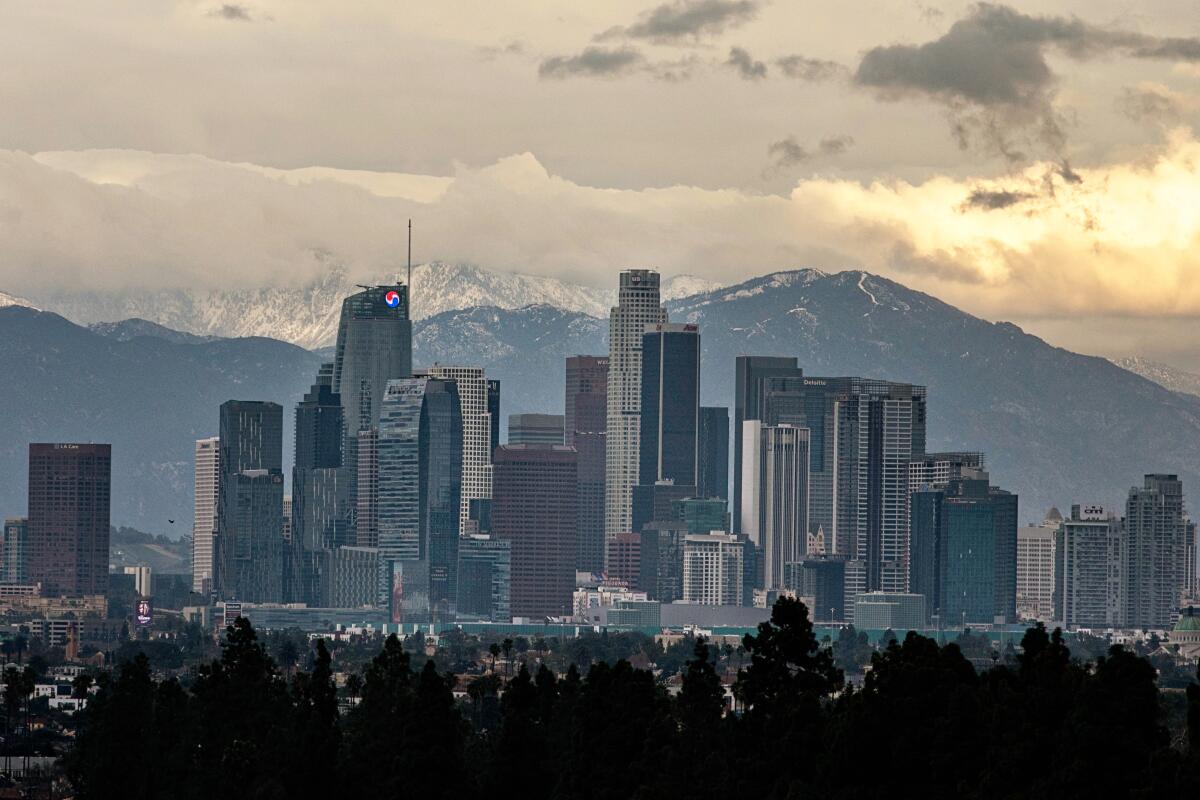
- Share via
When the eyes of the world turn to Los Angeles for the 2028 Olympic Games, will they see a smog-choked city full of traffic jams, gas furnaces and fossil-fueled power plants? Or a beacon of light in a polluted world, bursting with solar panels, electric cars and induction stoves?
The short answer: probably both.
But an ambitious plan unveiled Wednesday could lead to more of the good stuff and less of the bad stuff.
You're reading Boiling Point
Sammy Roth gets you up to speed on climate change, energy and the environment. Sign up to get it in your inbox twice a week.
You may occasionally receive promotional content from the Los Angeles Times.
The clean energy road map — crafted by the nonprofit Los Angeles Cleantech Incubator and endorsed by city and county officials, state agencies and utility company Southern California Edison, among others — lays out aggressive new climate goals for Los Angeles County. Those goals include a 15% reduction in planet-warming pollution between now and 2028, made possible by big investments in local solar power, clean transportation, electric heating, energy efficiency and more.
For Matt Petersen, the incubator’s president, the Olympics and Paralympics are a perfect time to demonstrate to the world that it’s not just Sacramento leading the way on climate change, as Gov. Gavin Newsom is currently showcasing in China. Los Angeles on its own is the world’s third-largest municipal economy, and it can play a crucial role in inspiring badly needed global action.
“We don’t get everything right,” Petersen acknowledged. “But we can move the needle.”
So where is Los Angeles doing well, and where can we do better?
On the bright side: The city of L.A.’s target of 100% clean electricity by 2035 is a decade ahead of the state’s mandate, and in line with what scientists say is necessary to keep the heat waves, droughts and storms of the climate crisis — which are already pretty terrible — from spiraling too far out of control. The Clean Power Alliance — a government agency that buys electricity on behalf of much of the rest of L.A. County — has also invested heavily in renewable power, including a massive desert solar farm that should come online later this month and is equipped with batteries to store sunshine for after dark.
But those efforts are far from enough.
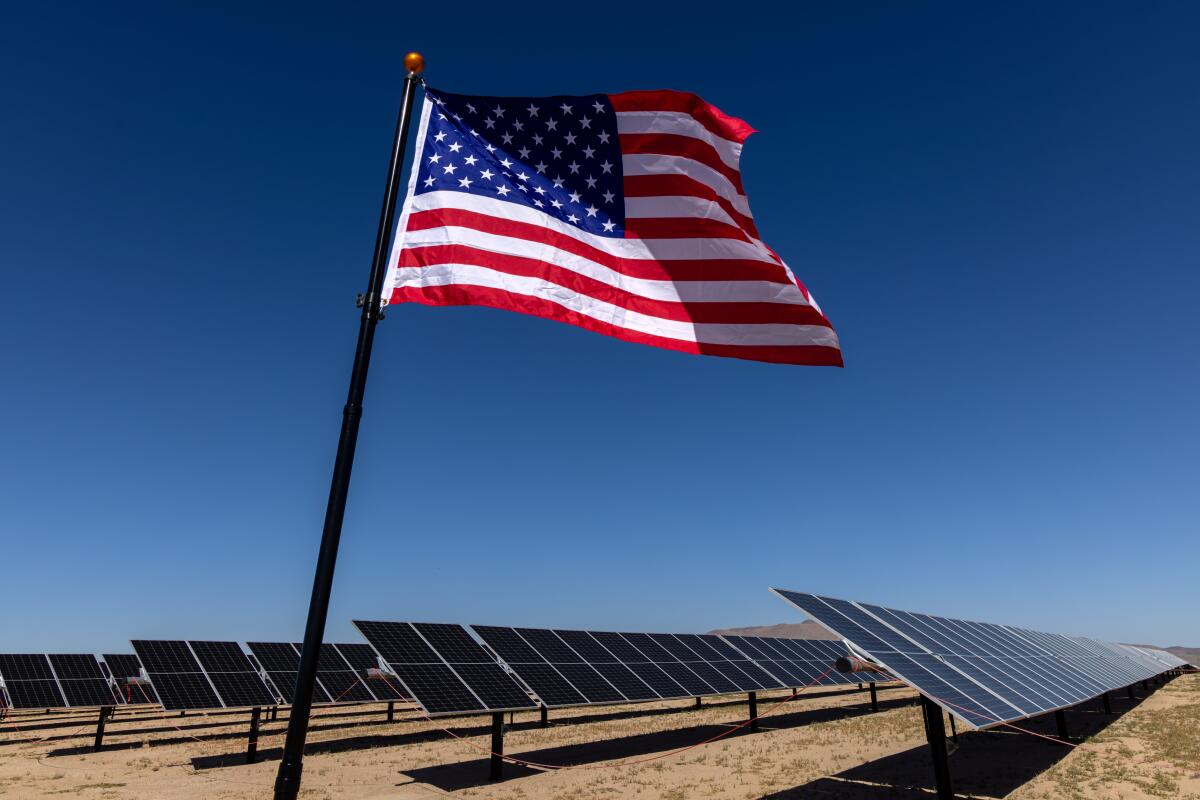
Los Angeles is infamous for its clogged freeways, sprawling housing developments and relative lack of public transit. Even with local officials making a tremendous push ahead of the 2028 Olympics to expand the light-rail system and add bus lanes and bike paths, the region must do far more to reshape its car-centric urban infrastructure. Cars, trucks and other vehicles fill our air with harmful chemicals and unhealthy particles, and produce roughly 40% of L.A. County’s heat-trapping carbon emissions.
Buildings are responsible for another 40%, our space heaters, water heaters and stoves making a significant contribution to global warming. The Los Angeles City Council voted last year to ban most gas appliances in new homes and businesses, which is a good first step. But it leaves millions of existing buildings where gas will need to be swapped out for electric alternatives.
The new clean energy road map is focused on cleaning up those polluters: buildings and vehicles.
On the buildings front, the road map envisions 3 million electric heat pumps for space and water heating being installed in L.A. County by 2028, along with 78,000 electric stoves and clothes dryers. Those appliances would help slash climate pollution from buildings 29% below what’s otherwise expected, while supporting or creating 111,000 jobs, the cleantech incubator estimates.
On the vehicles front, the road map adopts an existing set of goals endorsed by many of the same partners — including that 80% of passenger cars sold in L.A. County be electric by 2028, helping fuel a 25% reduction in carbon pollution from transport.
Sound impossible? So does the alternative. A team of international researchers reported this week that human beings are “on our way to the potential collapse of natural and socioeconomic systems and a world with unbearable heat and shortages of food and freshwater,” in the words of an Oregon State University scientist who was one of the study’s lead authors.
For cities and states looking to lead the world to a safer climate, that means there’s no such thing as moving too fast.
“I do worry that to get to these 2030, 2035 goals, these 2028 goals — we are perhaps behind right now,” said Mary Leslie, president of the Los Angeles Business Council and board chair of the agency overseeing California’s main electric grid.
“This is a pretty radical deal we’re talking about,” she said at a Wednesday event announcing the new road map.
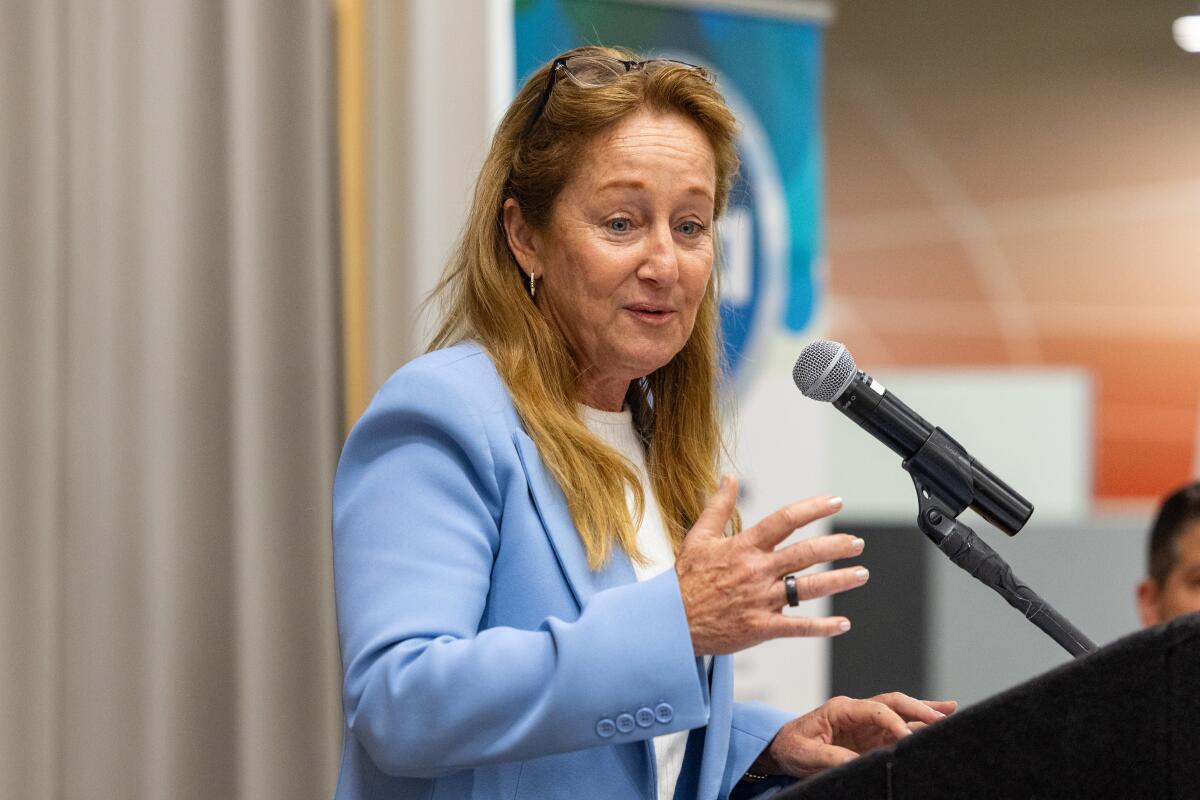
Supplying power to tens of millions of cars, trucks and household appliances — plus all the stuff we already use electricity for — will require building loads of solar panels, wind turbines and other climate-friendly energy. The biggest chunk of that power will almost certainly come from faraway solar and wind farms, which can produce electricity at a lower cost than rooftop solar.
But there’s still huge potential for rooftop solar, which can help cities stay powered when wildfires or other disruptions batter the larger electric grid — an increasingly common problem as the climate crisis screws around with global weather systems.
The new road map estimates Los Angeles County will need nearly 12,000 gigawatt-hours of new energy supplies a year come 2028, to power the many additional electric cars and appliances envisioned by its authors. The document sets targets for getting all of that energy from solar panels on houses and apartment buildings, as well as “community solar” facilities that serve renters who can’t install or can’t afford their own panels.
That would be a big deal, if it happens.
The road map also calls for a “virtual power plant” that would bring together rooftop solar panels, electric-vehicle batteries and stand-alone batteries in household garages to relieve stress on the power grid — especially during summer heat waves that are getting worse with climate change and making it harder to keep the lights on as families crank up the air conditioning.
That would be a big deal, too.
Already, the city of Los Angeles has 665 megawatts of local solar power, according to Nancy Sutley, deputy mayor for energy and sustainability. That’s more than any other U.S. city, and puts L.A. in a strong position to keep leading the way.
“The future is alive and well here in Los Angeles,” Sutley said at Wednesday’s event.
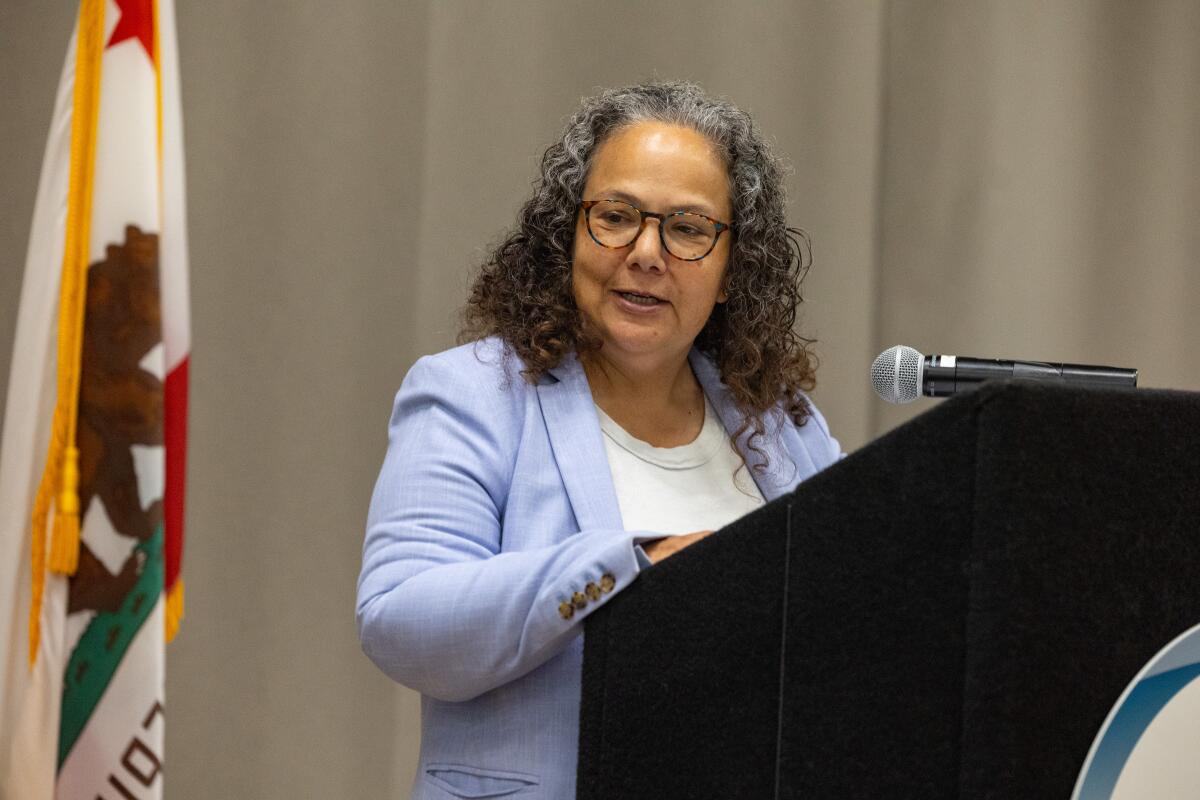
I was especially intrigued by Southern California Edison’s involvement with the road map, since it’s one of many investor-owned utility companies that have pushed officials in California and elsewhere to limit rooftop solar incentives.
Edison has a lot to gain from electric cars, heaters and stovetops, which create additional need for long-distance power lines and other lucrative infrastructure. Rooftop solar limits the need for that infrastructure, cutting against Edison’s business model.
But Stephen Lassiter — a policy director at Sunrun, America’s largest rooftop solar installer — told me he had a good experience working with Edison in the discussions that led to the clean energy road map. He noted that the two companies have previously partnered on a small virtual power plant, and that Sunrun is increasingly teaming up with car companies and major energy users such as Google on creative strategies to ensure there’s enough juice on the electric grid every hour of every day.
The new road map sets targets for those kinds of strategies, including “demand response” programs that pay people to use less electricity when the grid is stressed, and electric-vehicle batteries capable of sending power back to the grid in a pinch.
Lassiter quoted Sunrun’s chief executive as arguing that “radical collaboration” is needed for climate progress.
“We want to build that future in partnership with all the folks in the room,” Lassiter said. “That’s what it’s going to take.”
He’s right. But our conversation still left me wondering: Are utility companies such as SoCal Edison up for the task?
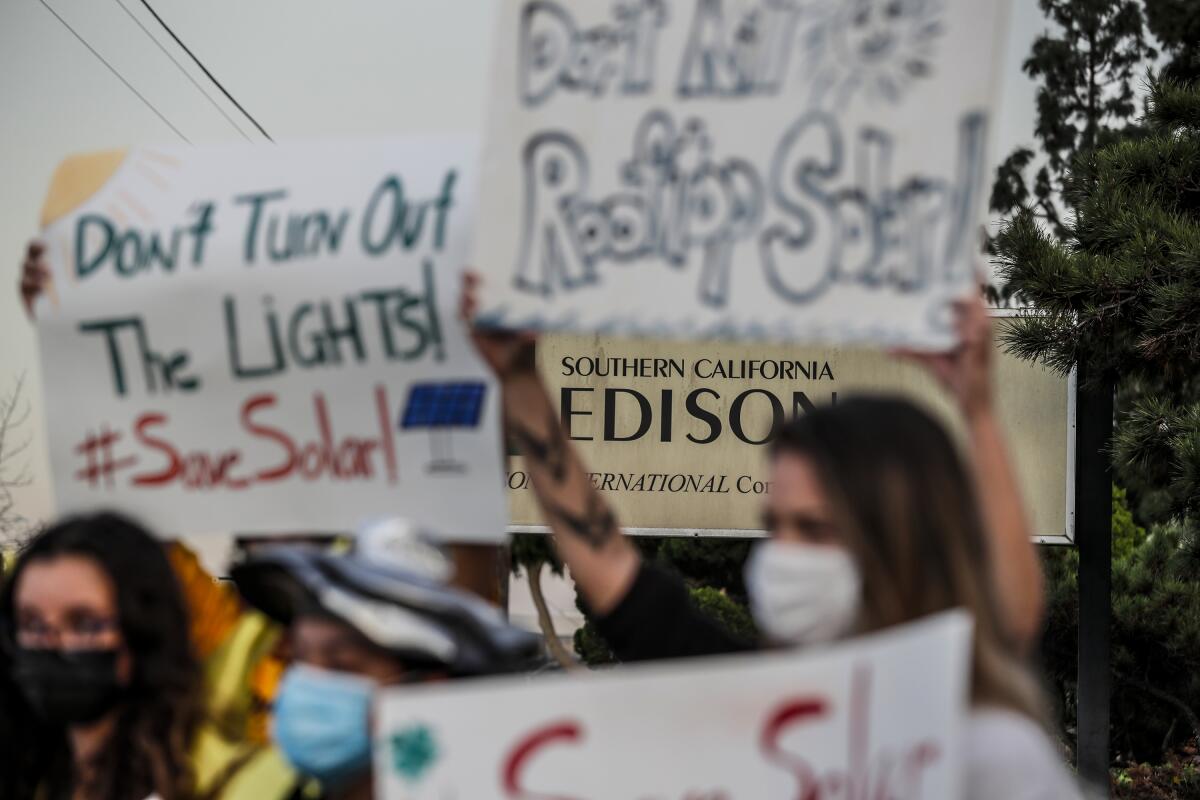
Before Wednesday’s event, I spent a few minutes talking with Erik Takayesu, Edison’s senior vice president of asset strategy and planning, at the cleantech incubator’s downtown headquarters. Although he didn’t want to weigh in on a recent decision by state officials to slash rooftop solar incentive payments — which Edison had urged, arguing the payments have driven up electric rates — Takayesu said the company supports the new road map, including its emphasis on rooftop solar and household batteries.
Those resources, he said, will help Los Angeles keep up with rapid growth in electric cars, heat pumps and induction stoves.
“You’re going to need more local resources — there’s no doubt about that,” he said. “The work starts now.”
That was a theme among everyone I talked with for this column: The work starts now.
It’s true for so many people in positions of power — starting with members of the “clean energy partnership” that produced the road map, who continue to hash out policies to support their goals. It’s true for the L.A. city staff studying whether to require air conditioning in every rental unit — a rule that would help vulnerable families stay cool as the planet warms but would also mean we need to build even more clean energy. It’s true for the L.A. Department of Water and Power officials working to ensure that low-income communities of color long burdened by fossil fuel pollution reap the benefits of clean energy.
And it’s true for political leaders who must find a way to limit the region’s continued reliance on natural gas.
That includes Newsom’s appointees on the California Public Utilities Commission, who voted this year to let Southern California Gas Co. store far more fuel at the Aliso Canyon gas storage field, eight years after a record-shattering methane leak.
It also includes L.A. Mayor Karen Bass’ appointees to the board of the Department of Water and Power, who are tasked with overseeing the city’s plans for 100% clean energy. Right now, those plans include switching several gas-fired power plants to unproven hydrogen technology, rather than closing them — which may end up working out great but is seen by environmental justice activists as unacceptably risky, especially for the low-income, largely Latino community surrounding one of the plants.
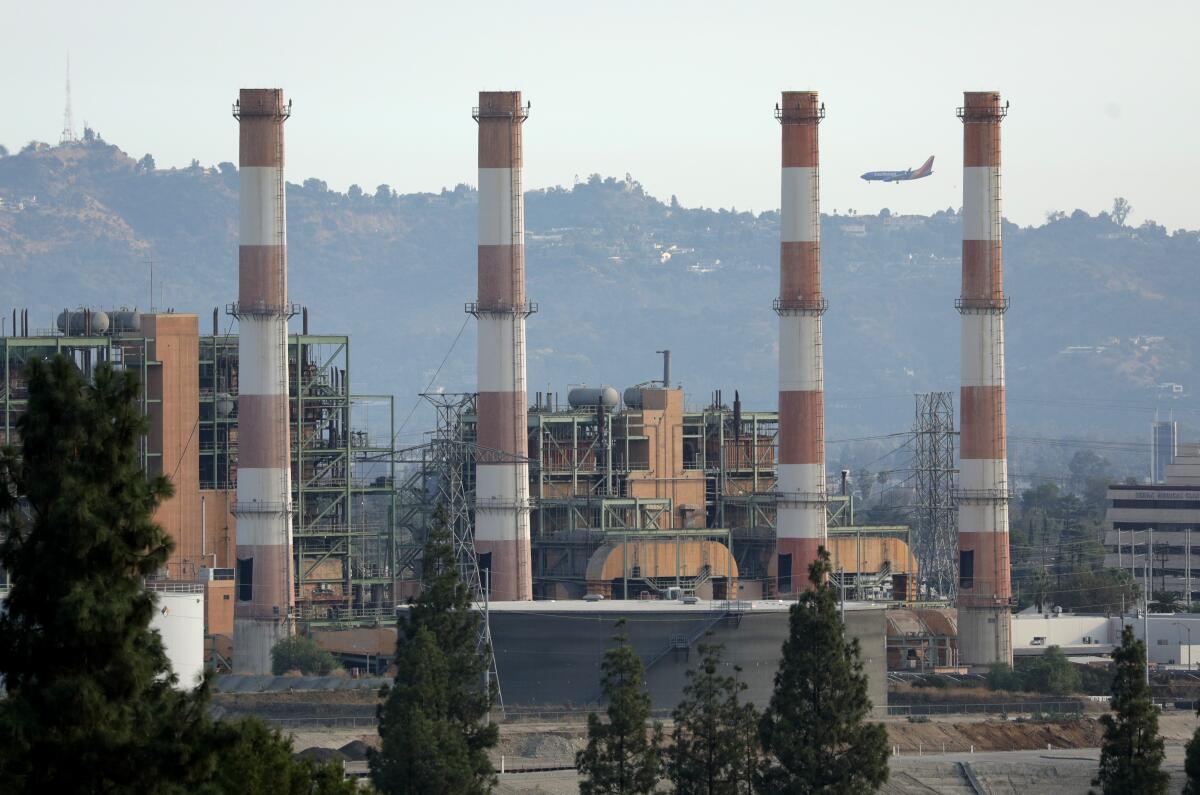
Then there’s L.A.’s greatest climate villain of all: our sprawling, car-centric cityscape.
It’s hard for me to imagine Los Angeles as a beacon of light on climate change and clean air as long as our region is defined by gasoline. What kind of message will it send to the world when Olympic athletes and spectators inevitably get stuck in an hour of traffic on the 10? Or if television broadcasts air “scenic” images of jam-packed freeways ?
“The future of cars is electric. But the future can’t be just about the cars,” said Rick Cole, L.A.’s chief deputy controller.
Earlier this month, Cole’s office released a report criticizing the city’s Green New Deal climate strategy — launched by former Mayor Eric Garcetti and embraced by his successor, Bass — as outdated and insufficient. But when we talked Wednesday, Cole gave the newly released clean energy road map a largely positive review, especially its focus on local solar power.
He also emphasized the pressing need to rebuild Los Angeles around people, not cars — which means refashioning our streets to support walking, biking and buses, and also building more housing in dense neighborhoods near public transit stations. The city’s Green New Deal calls for reducing the number of miles we travel in cars nearly 40% per person by 2035.
Cole expressed frustration with a statement from Bass last week rejecting calls to study the demolition of the 90 Freeway — just two months after the mayor expressed support for the proposal. After initially calling the 90 a “freeway to nowhere” (it runs just three miles) and praising a plan to replace it with thousands of homes and a large public park, Bass took a U-turn, saying she had “heard loud and clear from communities who would be impacted and I do not support a study on this initiative.”
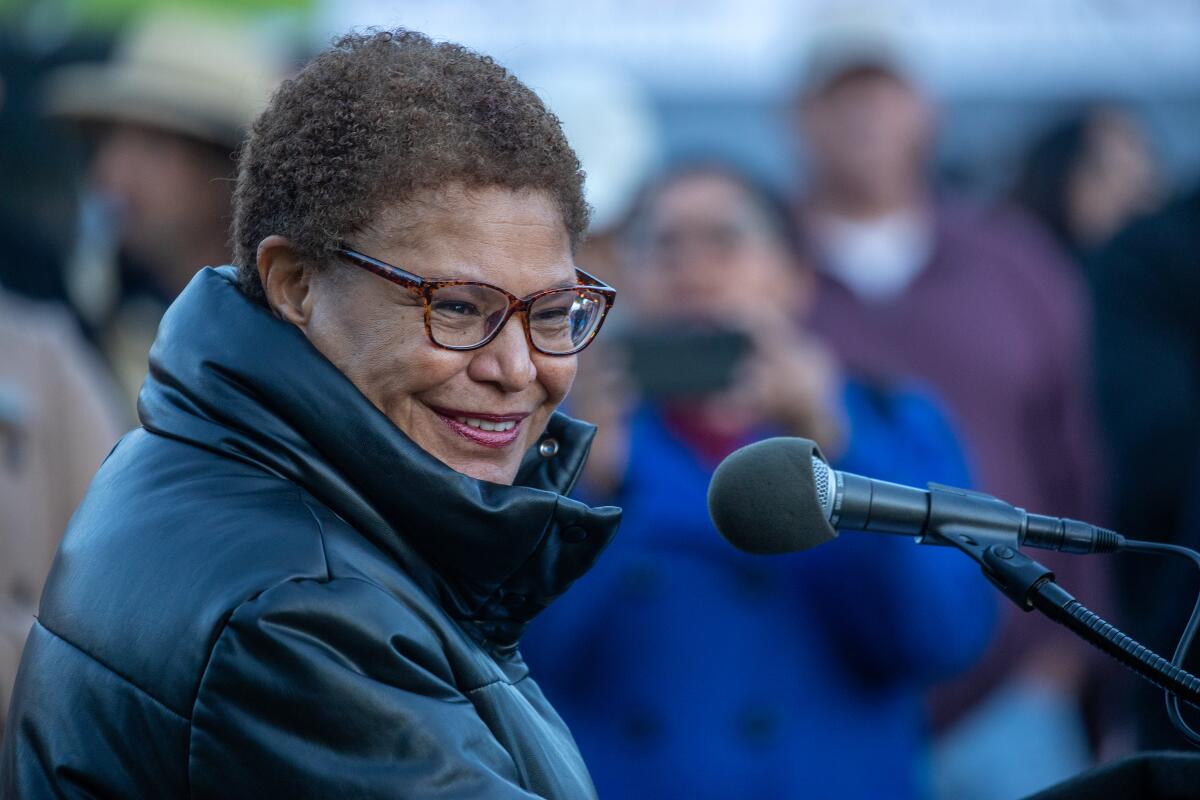
At the same time, Cole pointed to the City Council’s recent approval of community plan updates in Hollywood and downtown — which should allow for construction of up to 135,000 new homes in the coming years — as an example of climate progress.
“We’re moving in the right direction, but glacially,” he said.
It’s important not to lose track of the climate progress we’ve already made. When I chatted with L.A. City Council President Paul Krekorian before Wednesday’s event, he recalled serving in the state Legislature in the late 2000s, and all the arguments he heard back then against a proposal to mandate 33% renewable energy by 2020 — arguments that seem quaint in retrospect.
“All the things we’re doing now that a few years ago people said were impossible — it gives you a lot more hope for the future about the things that people are saying are impossible now,” Krekorian told me.
For better or worse, the eyes of the world will turn to Los Angeles in 2028. We won’t solve all of our problems between now and then, but we’ve got a chance to prove that a better future is possible. Let’s give it everything we’ve got.
ONE MORE THING
I began Tuesday’s edition of this column by writing that Norman Rogers “has worked at the West Coast’s largest oil refinery for nearly a quarter-century — and he’s ready to be part of the fossil fuel industry’s undoing.”
After the piece published, I got an email from Rogers — a vice president at United Steelworkers Local 675 — taking issue with my language, and clarifying it’s not his desire to dismantle companies that have long provided high-quality jobs for himself and his colleagues. Undoing the fossil fuel industry, he wrote, is not why he’s part of a newly launched coalition of labor unions that will lobby California to help oil and gas workers transition to clean energy jobs.
Rather, Rogers wants to ensure “a place for our people to land” as the economy shifts to clean energy, and fossil fuel jobs begin to go away — a transition beyond his control.
“What myself and the coalition are working towards are paths to protect our members,” he wrote.
Navigating the nuances of the energy transition isn’t easy. I’ll keep doing my best to get it right.
We’ll be back in your inbox Tuesday. To view this newsletter in your web browser, click here. And for more climate and environment news, follow @Sammy_Roth on Twitter.
Toward a more sustainable California
Get Boiling Point, our newsletter exploring climate change, energy and the environment, and become part of the conversation — and the solution.
You may occasionally receive promotional content from the Los Angeles Times.






